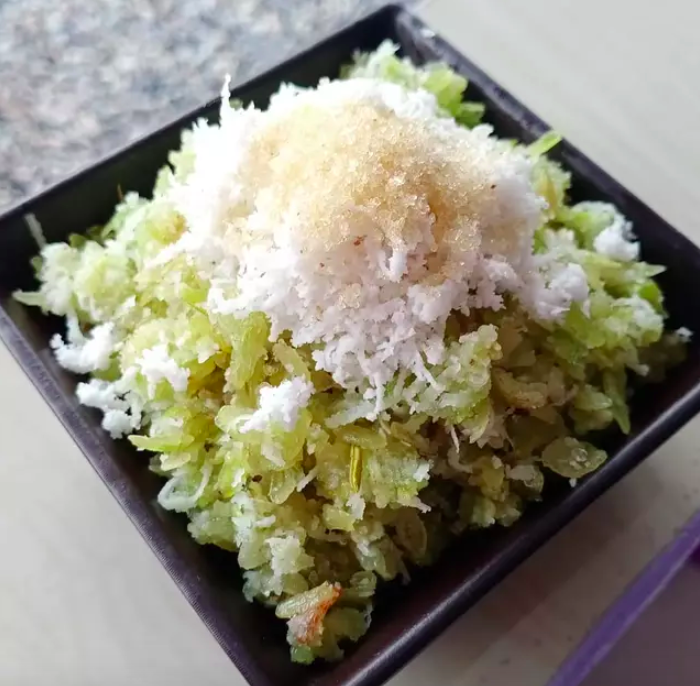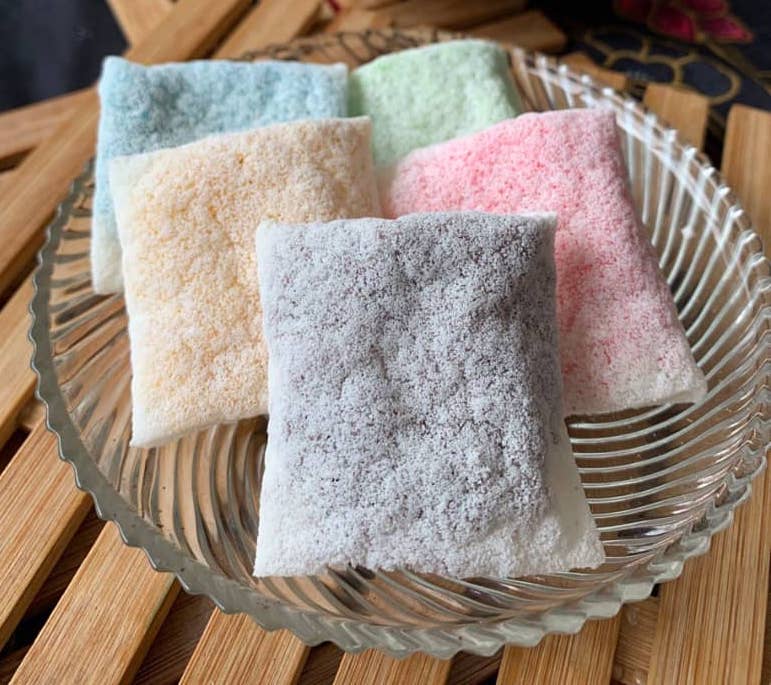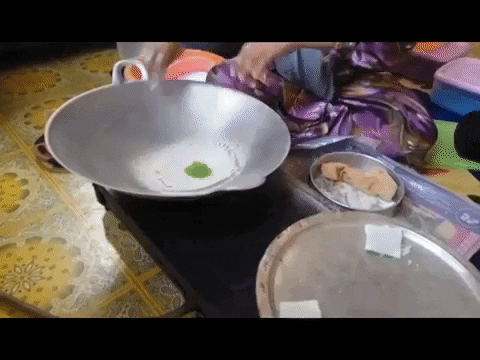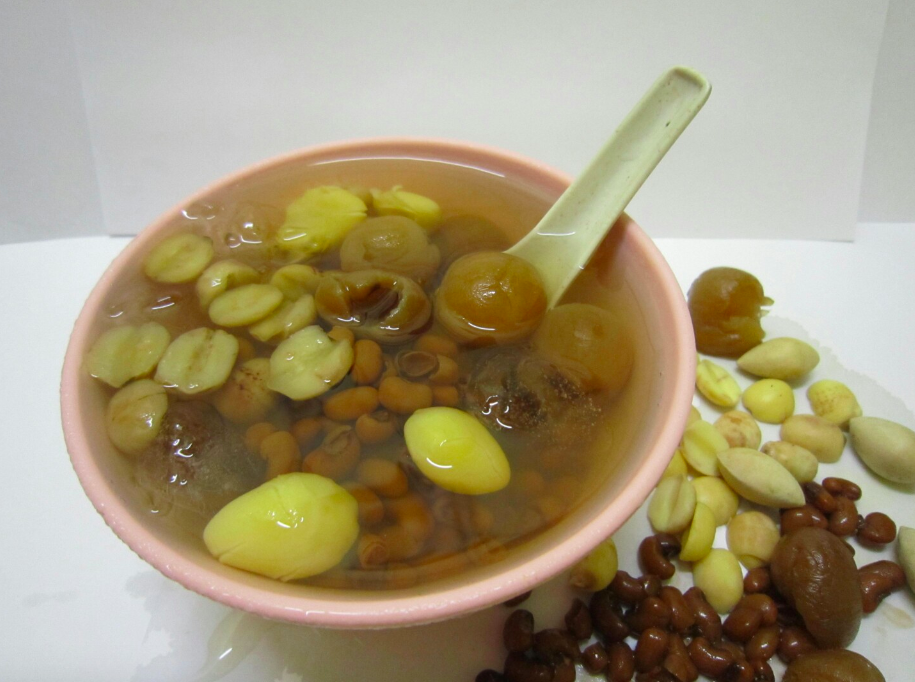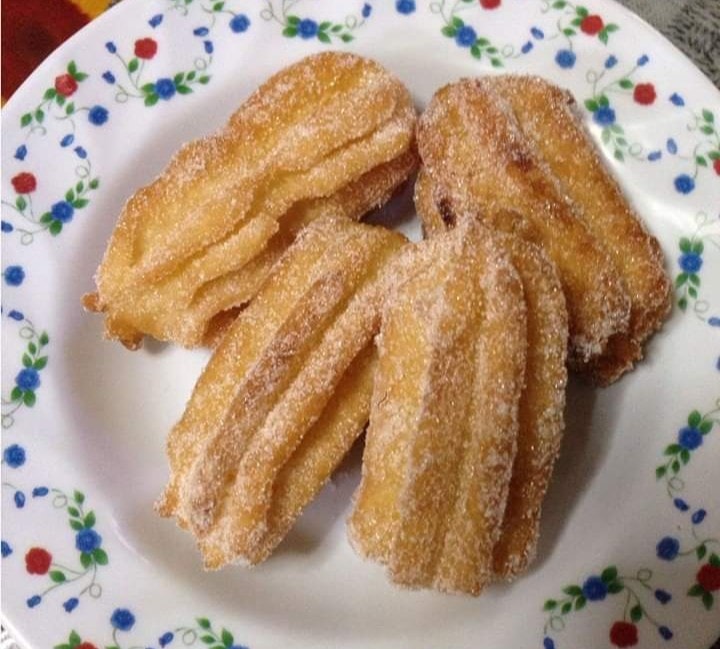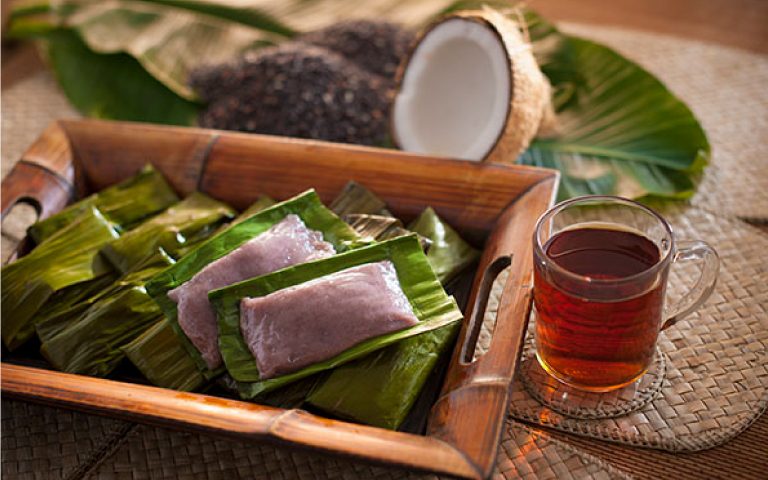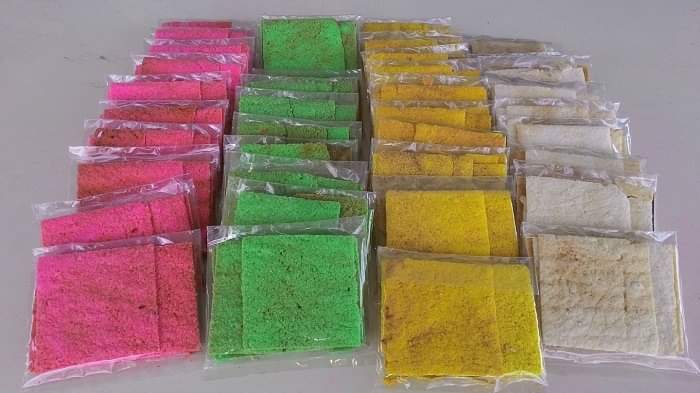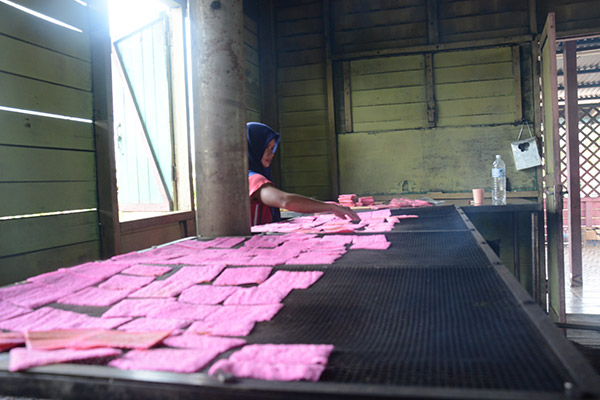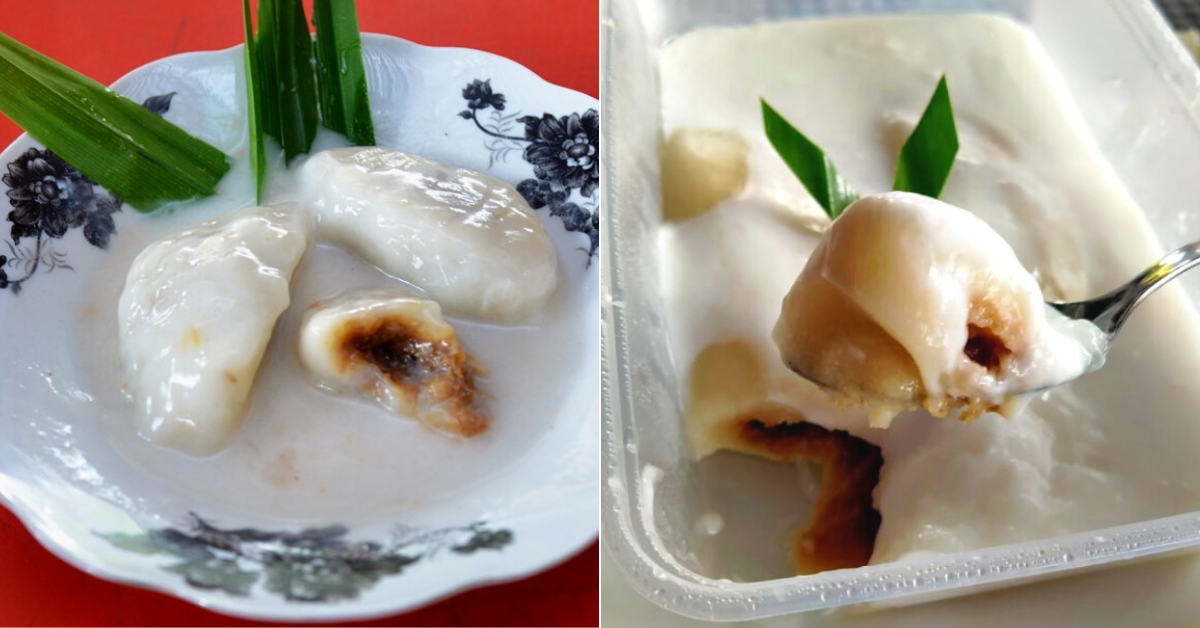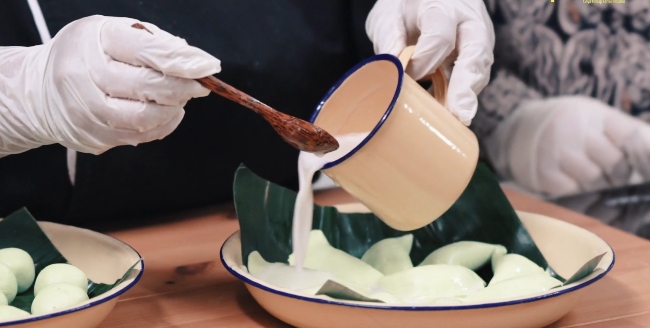8 Rare Malaysian Desserts From Different States That You Never Knew Existed
For those of you with sweet tooth! :9
1. Emping | Perlis
Emping means rice flakes in Malay, and is a traditional dessert from Perlis. This unique snack is made using young green grains of glutinous paddy that are separated from their husks through several heating and pounding processes.
Sometimes wrapped in banana leaf, emping is eaten with freshly grated coconut, sugar, and salt. Since not a lot of people know how to make it, emping is a rare Perlis treat that you should try if you get the chance.
In fact, emping is only available once a year, during the monsoon season.
2. Kuih Bunga Pudak | Kedah
Named after the Pandanus plant, or pokok pudak, this kuih is a traditional heritage for those living in Kedah, especially around Alor Setar and Jitra. The filling consists of grated coconut, sugar, and coloured dye, while the skin is made with a thin layer of flour.
Although the ingredients are easily accessible, making it requires skill. First, you'll need to sift flour into a wok, then scoop the filling in. Next, the tricky part is folding the kuih into nice and even rectangles.
It is usually served at events and during festive seasons. However, the rare kuih is difficult to find as not many have the skills to make it.
3. See Koh Th'ng | Penang
See Koh Th'ng, which translates as Four Fruits Soup, is a kind of tong sui you'll find along Kimberley Street in Penang. Some stalls still follow the traditional method of using charcoal to make the soup, giving it a distinct aroma.
As its name suggests, there are four main ingredients, which are ginkgo nuts, lotus seeds, longan, and red beans, served in a bowl of sweet soup. Refreshing and tasty, you can have See Koh Th'ng warm or chilled. People tend to have it for supper, or along with their dinner.
4. Kuih Belimbing | Terengganu
While this may look like a short version of churros, kuih belimbing actually originates from Terengganu and has been around for many years. Also known as kuih terembat, the traditional way of eating it is to dip it in sugar water, but you can also sprinkle it with regular sugar.
Great as a snack, kuih belimbing is actually fairly simple to make. All you need is a few ingredients like flour, egg, margarine, sugar, and vanilla essence. The secret is to use a star-shaped mould to give the kuih its distinctive look, before deep frying until golden brown.
It is often eaten as a tea-time snack, or for buka puasa during Ramadan.
5. Kuih Tahi Itik | Kelantan
Kuih tahi itik is a traditional dessert in Kelantan that's made with egg whites. An interesting fact is that kuih tahi itik was actually served as a side kuih. This is because it was often made alongside kuih jala mas or kuih pauh dilayang, which used egg yolks.
As such, it is not widely available, except during specific seasons like school holidays, during which you can find this kuih at markets and pasar tani. You may also see it served at weddings.
Now a part of Kelantan's longstanding heritage, kuih tahi itik is cooked over a flame with rice flour, sugar, pandan leaves, and a few other ingredients, culminating in a sweet, sticky, addictive dessert. It is often served with plain tea, as the kuih itself is pretty sweet.
6. Hinompuka | Sabah
Hinompuka is a steamed glutinous rice cake that's popular among Kadazan people in Sabah. This delicious gooey kuih is made with brown rice flour, glutinous red rice flour, palm sugar, and grated coconut flesh, then wrapped in banana leaves and steamed.
Some people even add banana or sweet potato into Hinompuka to give it a different kind of flavour. Available at local markets and served during special occasions like weddings and Hari Kaamatan, Hinompuka is a special dessert worth a try if you're in Sabah.
7. Tebaloi | Sarawak
Tebaloi is a crispy cracker made with sago flour, eggs, desiccated coconut, sugar, turmeric, and other ingredients. The traditional method of making tebaloi is labour intensive, as you'll need to flatten the dough on a large banana leaf with a rolling pin, before grilling it over the fire for 20 minutes.
Next, you'll have to cut the dough into four-by-four-inch squares, place them back into the fire, and use a heavy block to further flatten the crackers.
While there are commercial versions of tebaloi available nowadays, the traditional method used by the Melanau people in Sarawak is said to make the crackers crispier with better flavour. But, the advantage of the commercial version is that it makes tebaloi more widely available. You can find it in most shops in Sarawak.
8. Kuih Sopang | Negeri Sembilan
Kuih sopang is a traditional dessert from Negeri Sembilan that's made from glutinous rice flour, banana, palm sugar, and grated young coconut filling. Shaped into an oval, the kuih can be steamed or fried, and served with a thick coconut milk gravy.
Fun fact, the name of this kuih actually came from Pekan Sepang, which is pronounced as "Sopang" in the local dialect.
Though it is special kuih that's usually served during Hari Raya, you don't have to wait for the festive season to enjoy it. Widely available, it is sold at many kuih shops around Negeri Sembilan.
Is your mouth watering after seeing these yummy Malaysian treats? Good news, you'll easily find recipes for these desserts online! :9
In fact, you can try whipping them up at home using Central Sugar Refinery (CSR) products
Known as the Sugar Specialist, CSR has over 56 years of experience providing Malaysian homes with the finest sugar and specialty sweetener ingredients.
From households and small bakeries, to big manufacturing factories, CSR has been the sugar brand that Malaysians have relied on for over five decades. There are many reasons why CSR is the preferred choice for Malaysians, including their quality products, innovativeness, and dedication to meet their consumer's wants and needs.
No matter what dessert you're preparing, CSR has got you covered
From icing sugar and caster sugar, to unique alternatives like stevia and sugar mix, CSR offers a variety of sugar and sweetener ingredients you can use for baking, cooking, or beverages. In fact, CSR has four different kinds of brown sugar for you to choose from, ensuring you get the best taste for your sweet treats.
If you're planning to make kuih, CSR recommends going with their premium range of Soft Brown Sugar. This dark brown coloured sugar is softer and has a slightly moist texture, with a hint of caramel taste that will make your kuih taste even better!
Find out more about CSR's products on their website, Facebook, or Instagram. You can also buy CSR's products via their Lazada Flagship Store.
